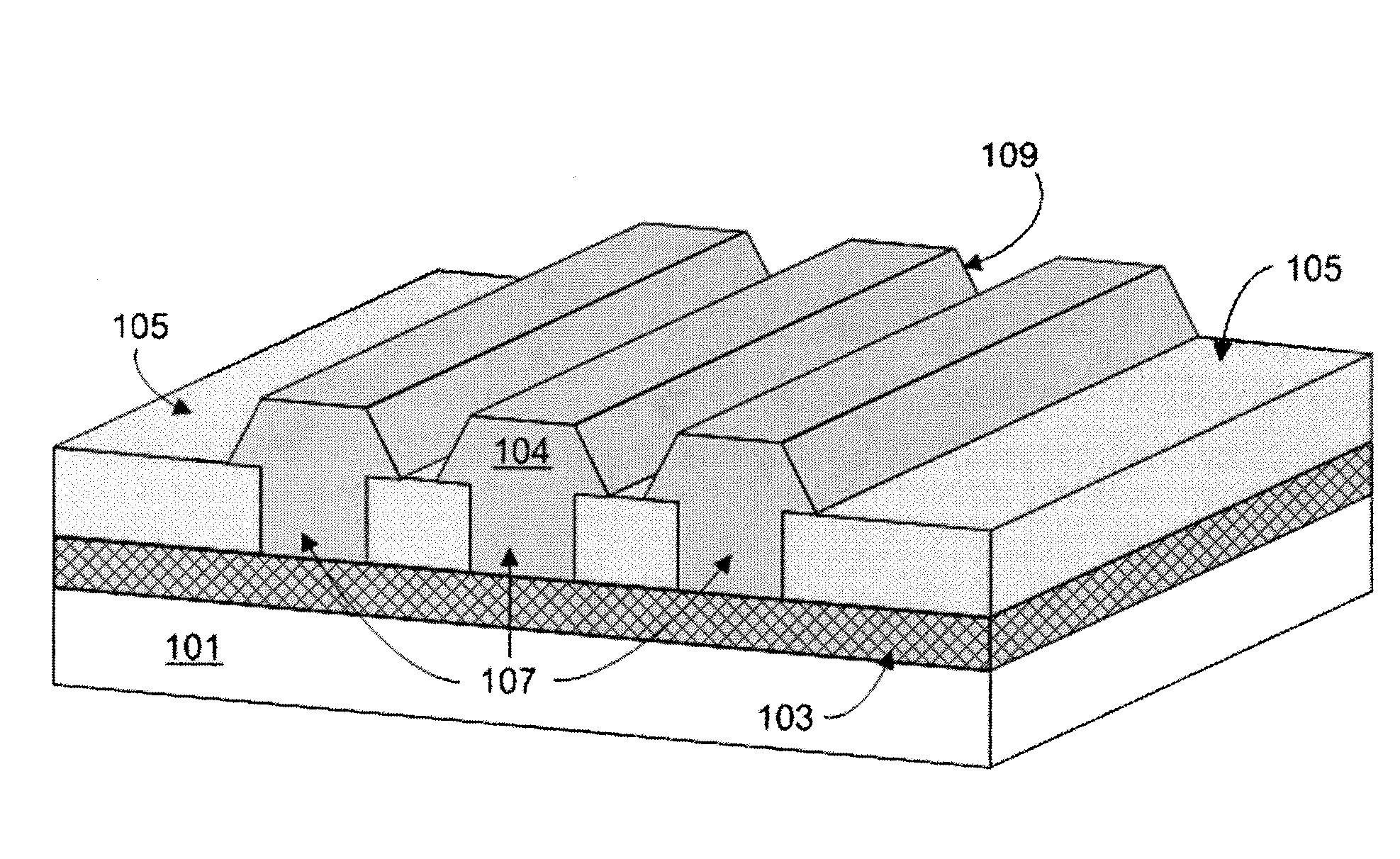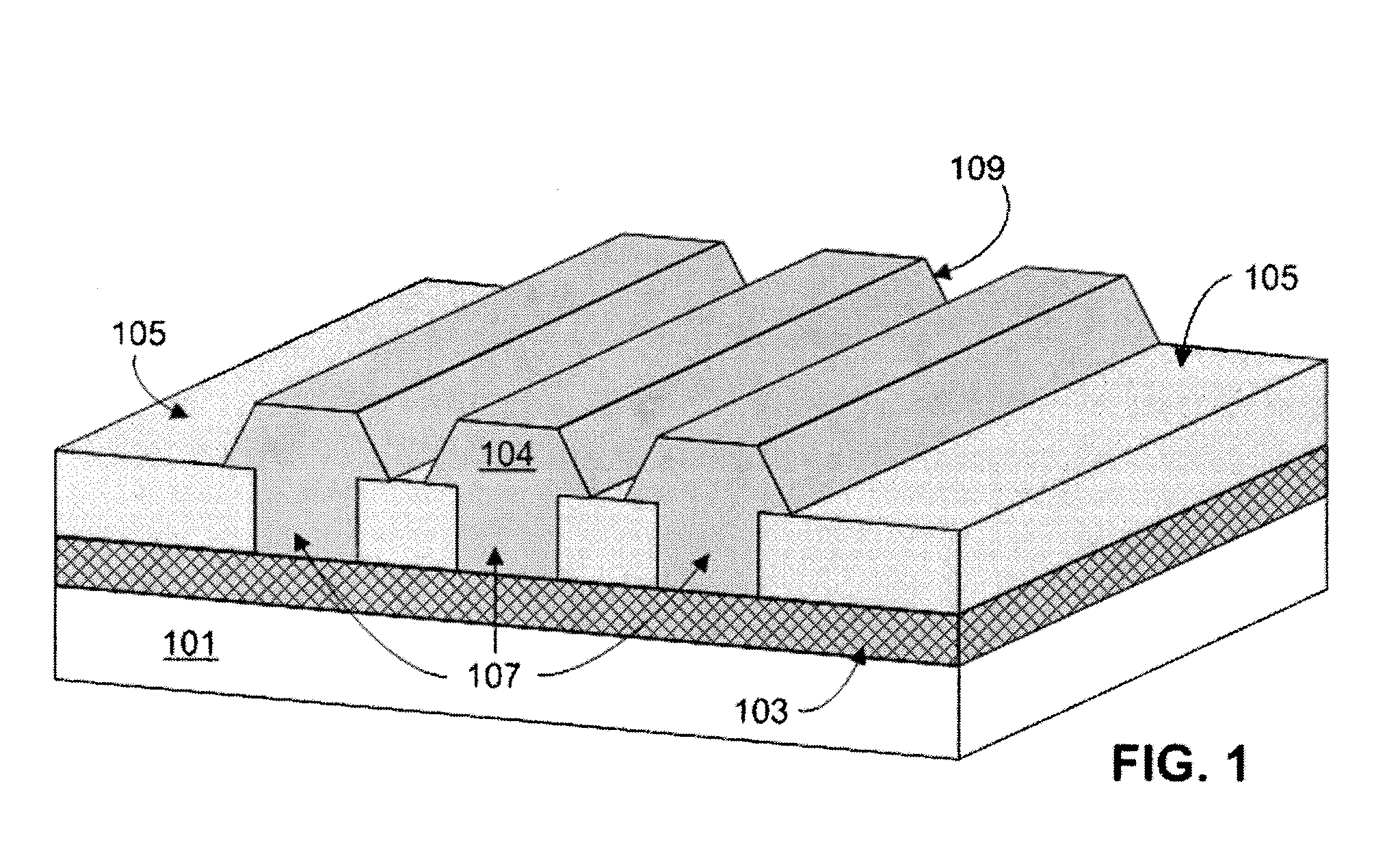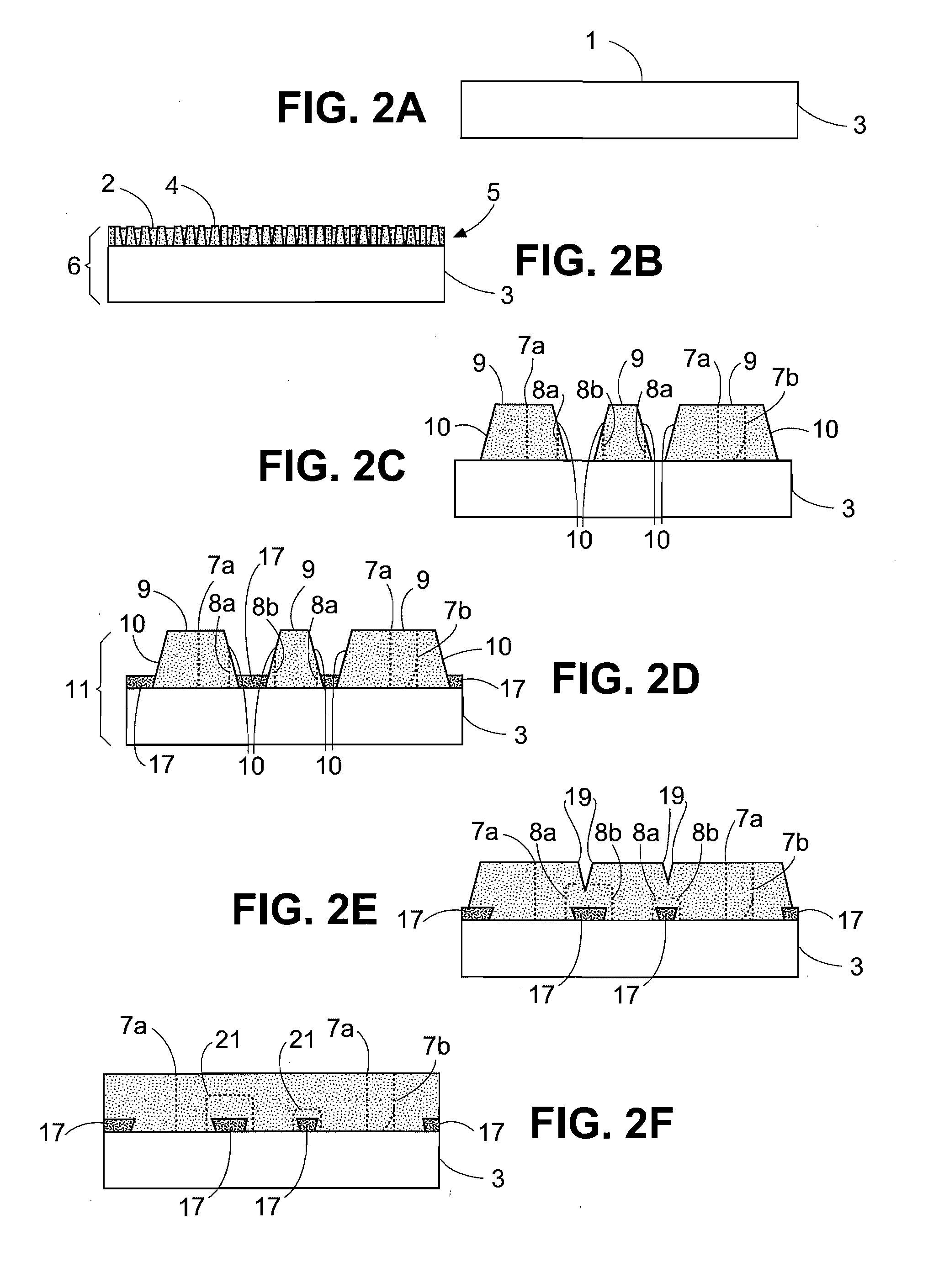Methods for producing improved epitaxial materials
a technology of epitaxial materials and epitaxial layers, applied in the direction of basic electric elements, electrical equipment, semiconductor devices, etc., to achieve the effects of simplifying the elo process, reducing the density of surface defects, and increasing the probability of defects
- Summary
- Abstract
- Description
- Claims
- Application Information
AI Technical Summary
Benefits of technology
Problems solved by technology
Method used
Image
Examples
examples
[0067]FIG. 4 illustrates an example of a gallium nitride sample grown by the methods described above. FIG. 4. demonstrates a transmission electron micrograph (TEM) imaged from a cross-section sample of a gallium nitride crystal grown on (0001) sapphire substrate with diffraction condition g=. The sapphire substrate is shown at the bottom of the image 403 and the plurality of dark lines in the image corresponds to defects in the GaN crystal. Defect structures 402 are unaffected by the introduction of the dielectric layer and therefore likely correspond to defect structures 7 in FIG. 2e. However, the defect structures 401 exhibit a change in propagation direction, as with defect structures 8 in FIG. 2e and are therefore more likely to interact with other defects, resulting in defect annihilation / coalescence and a subsequent reduction in defect density. The reduction in defect density made possible via the methods of this invention can be again be evaluated via FIG. 4. Examination of t...
PUM
 Login to View More
Login to View More Abstract
Description
Claims
Application Information
 Login to View More
Login to View More - R&D
- Intellectual Property
- Life Sciences
- Materials
- Tech Scout
- Unparalleled Data Quality
- Higher Quality Content
- 60% Fewer Hallucinations
Browse by: Latest US Patents, China's latest patents, Technical Efficacy Thesaurus, Application Domain, Technology Topic, Popular Technical Reports.
© 2025 PatSnap. All rights reserved.Legal|Privacy policy|Modern Slavery Act Transparency Statement|Sitemap|About US| Contact US: help@patsnap.com



